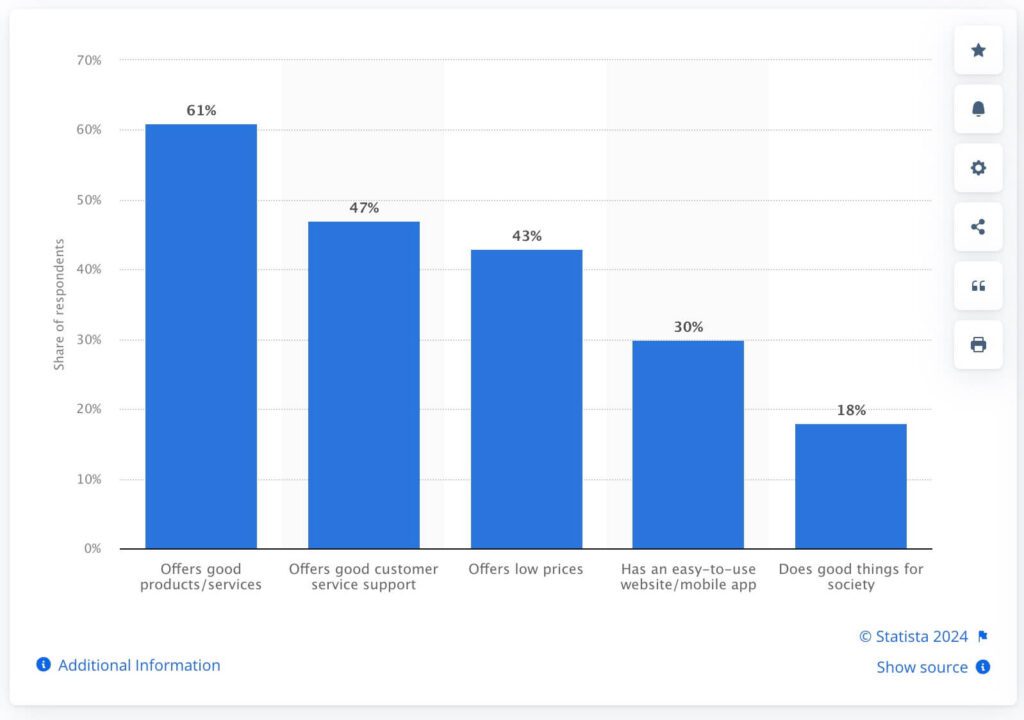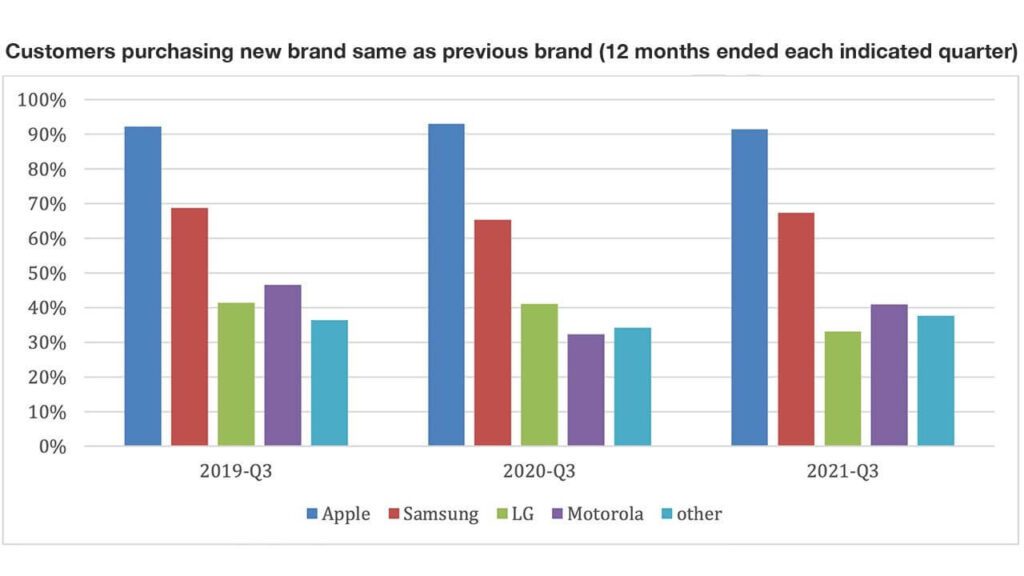Building Brand Loyalty: Top Strategies for Creating Lasting Customer Relationships
Gone are the days when your neighborhood store was the only shopping option. Now, consumers have both online retailers and physical stores vying for their attention. If one deal doesn’t appeal to you, there’s always another retailer offering the same product at a better price. If one brand’s options don’t fit your preferences, another one likely has it all. In this highly competitive landscape, brand loyalty becomes a crucial advantage.

While building tangible assets may seem straightforward, cultivating something intangible, like brand loyalty, can feel like a daunting task. However, with thoughtful planning and consistent effort, it’s absolutely achievable.
In this blog post, we’ll discuss some of the most effective strategies that help brands build lasting loyalty and pave the way for long-term growth and success.
Brand Loyalty: An Introduction
To begin with, what is brand loyalty? No matter how many options are available, do you find yourself leaning toward a particular brand? This inclination stems from your loyalty to that brand. Hence brand loyalty is what motivates a consumer to stick to a brand even when there are other attractive options available.
More than 50% of marketers consider brand loyalty to be one of the top priorities in marketing. In fact, brand loyalty isn’t something that only well-established businesses need to worry about. It is something that every business needs to invest in from day one. Why? Here are a few reasons:
- Data shows that existing customers are about 50% more likely to try a new product introduced by a brand they are loyal to. Hence brand loyalty sets the stage so brands can confidently undertake new ventures or expand their portfolio.
- Brand loyalty gives a brand a competitive edge and can ensure sustained growth even if the competition in the industry seems to be soaring or the industry trends seem to be too volatile.
- Additionally, loyal customers also tend to spend about 31% more than new customers. And about 64% of them tend to purchase more frequently from brands they are loyal to. Summing up, this means that brand loyalty leads to higher customer lifetime value.
- Brands with loyal customers are more likely to bounce back from crisis because they have customers who are willing to go out of their way and support them during challenging times.
- Did you know that brand loyalty helps improve your profits too? Yes, a mere 5% increase in customer retention is said to boost a brand’s profits by about 25% to 95%.
So, what strategies can you deploy to reap these benefits? Let’s find out:
Strategies to Nurture Brand Loyalty
The image below is from Statista and it summarizes some of the key drivers of brand loyalty.
With so many factors to factor in, there are a few things that brands can do to boost loyalty and hence improve customer retention.
Deliver on promises: prioritize product/service quality
As shown in the graph above, about 61% of consumers find quality of products/services to be the most crucial factors that influence their loyalty to that brand. That is because the consistent delivery of quality makes the brand dependable. Consumers know that their money is spent well.
Therefore, consistently create high-quality products and delivering on your promises creates a deep-rooted trust in your brand.
For example, consider Apple. The image below shows the brand loyalty comparison of some of the top smartphone brands like Apple, Samsung, LG and Motorola.
Clearly Apple seems to be holding its spot as one of the top brands with the most loyal customer base for a long time. So, how did the brand achieve this? Through consistent delivery of high quality gadgets.
Yes, as brands like Samsung are venturing into innovative applications of AI in their smartphones, Apple seems to be lagging. Hence there are a lot of people who mock the brand.
However, when it comes to quality in the form of durability and long-term software support for their devices, Apple seems to have established a unique place for itself. Hence the loyal crowd who rush to pre-book any new iPhone that is released – even if it looks no different from the previous models 😉
Be one of a kind: define your USP
If your brand is going to be just another name in the industry, why would customers be loyal to your brand? It’s about showing them what makes you unique.
A unique selling proposition (USP) tells customers what your brand offers that your competitors don’t. In other words, it tells them about the unique value they get upon choosing your brand over the others.
Additionally, when a brand has a clear and compelling USP, it can attract customers who are specifically seeking that unique quality or benefit. This targeted approach can lead to higher customer satisfaction and hence brand loyalty.
For instance, Mercedes-Benz has successfully defined its USP as luxury, class and prestige. From their brand identity to commercials, you’ll see adherence to sophistication in all walks of their marketing.
Here’s an ad that demonstrates how they have consistently focused on delivering class for decades. Over the years, the brand’s focus on their USP has led to people immediately associating the brand with premium quality, sophisticated design, and an elevated driving experience.
They also have commercials that focus on the brand’s heritage and preserve their roots hence supporting their focus on premium offerings.
Go the extra mile with exceptional customer service
Did you know that poor customer service cost businesses around the world about $3.7 Trillion? In fact, bad customer service causes nearly 64% of consumers to switch brands.
Therefore, customer service is undoubtedly one of the biggest influencers that can make or break brand loyalty.
This is because when customers feel valued, understood, and supported, they are more likely to remain loyal to a brand. Consequently, exceptional customer service can turn a one-time buyer into a repeat customer and, more importantly, a passionate advocate for the brand.
Zappos is one of the exemplary brands with respect to customer service. In fact, this online fashion retailer is known for their customer-obsessed culture offering some of the most flexible purchase, shipping and returns options for customers.
An interview with the Zappos CEO, Tony Hsieh, published by Harvard Business Review highlights how the brand has consistently gone extremes for customers. Like moving their headquarters to where their customer call centers were located for instance.
Paying attention to their customers and genuinely listening to them has proven to be fruitful for Zappos in more than one way. In addition to building brand loyalty, this has also helped the brand perfect their offerings.
For example, according to the brand, Zappos Adaptive, one of their most successful product lines focused on adaptive and functional fashion was created when a customer expressed their pain in finding the perfect pair of footwear for their child.
Clearly, investing in good customer service to foster brand loyalty brings more benefits than you think.
Reward long-term engagement through loyalty programs
One of the most straightforward strategies to build brand loyalty is to draft a good loyalty program. Loyalty programs are great ways to reward engagement and incentivize the trust loyal customers place on your brand.
Loyalty programs work because by offering exclusive benefits and rewards, you can strengthen customer relationships and encourage repeat purchases. So, how do you reward their continued patronage?
- Exclusive deals
- Special discount codes
- Freebies along with their purchases
- Free shipping
- Exclusive access to new launches
- Early access to sales
The ideas for special perks to offer through loyalty programs are plenty. In short, a well-crafted loyalty program is not just about boosting sales but also about reinforcing a sense of appreciation, making customers feel like valued members of the brand’s community.
One brand that has effectively used the concept of loyalty programs to build brand loyalty is The North Face with XPLR Pass. From access to exclusive products to birthday gifts, and free shipping this rewards program has it all.
The North Face also gives members early access to product drops like the one they announced here in their Instagram post.
Perks like these make loyal customers feel special and increase the chance of these customers spending on new launches.
Another cool idea that The North Face deploys to reward loyal customers is access to exclusive events. This shows how loyalty programs can go beyond monetary rewards and help build a strong community of loyal customers.
Those are just a few ways to leverage loyalty programs to build loyalty and nurture stronger emotional ties with your customers.
The power of personalization for deeper connections
No two consumers are the same when it comes to what they expect from a brand both in terms of the marketing content and the overall experience. Therefore the key to successful marketing is to ensure that you craft and deliver a unique personalized experience to every customer.
Gone are the times when simply addressing your customer with their name in the email sent to them felt like personalization. Times have changed and personalization calls for so much more.
This is because customers want brands that understand them, brands that can accommodate their unique preferences. Those that can respect their likes and dislikes.
In fact, personalization is no longer a luxury but a necessity. So much so, that about 76% of consumers get annoyed when they see that the brand they are transacting with is not personalizing the experience for them.
In conclusion, personalization is a key factor in building meaningful customer relationships and therefore an essential building block for brand loyalty as well.
Spotify is one brand that perhaps a lot of marketers look up to when it comes to personalization. The brand has aced their personalization game, no doubt!
The Spotify Wrapped campaign itself is a great example of the power of personalization.
Additionally, here are the kinds of emails that Spotify is known for.
When you see that a brand knows you so well and always has recommendations you actually enjoy, then transacting with the brand feels comfortable and exciting, don’t you agree? This comfort zone that you create through personalization is what boosts brand loyalty.
Humanize your brand to make it approachable
Customers need to find a brand to be friendly and approachable in order to connect better with it, trust it and stay loyal to it. To achieve this, your brand needs to feel human. Therefore, humanizing your brand needs to be your top priority when building brand loyalty.
One of the requisites of humanizing a brand is to create a distinct brand identity and consistently represent your brand across all marketing channels and customer touchpoints.
Secondly, complement this identity with a unique tone of voice. As in, ensure that your brand does not just look the same but also sounds the same everywhere. Should you sound friendly or formal, witty or empathetic? It all depends on who you are talking to (your target audience) and what your brand’s personality is about.
Consider the cheeky responses that Wendy’s gives on social media, for instance. Their Tweets paint a clear picture of their unique tone of voice.
Finally, to give a more concrete shape to your brand identity and to make it appear warm and easy to connect with, a brand mascot can be of great value. A good example is Pillsbury and the beloved Pillsbury Doughboy mascot.
The supposedly 8 ¾ inches tall and playful character also goes by the name Poppin’ Fresh and was introduced in the year 1965. Having appeared in hundreds of ads representing over 50 different products from the brand, this mascot has become a friendly face that humanizes the brand and makes it stand out in the crowded market.
To sum it up, to boost brand loyalty, work toward consistent brand presentation through a clear identity and tone of voice and possibly a relatable mascot.
Need help designing a mascot for your brand? Get a KIMP Graphics subscription.
Ready to Strengthen Your Brand Loyalty?
To summarize, building brand loyalty takes a combination of diverse strategies that nurture trust and establish your brand’s uniqueness. To achieve all this, your brand needs to look the part, always. That’s where working with a professional design team makes a difference. And considering the need for consistency, a dedicated design team to take care of all your marketing and brand designs can be the most optimal choice. A cost-effective one too! An unlimited design service like KIMP offers all that and more.
Ready to explore the perks of unlimited design services? Sign up for KIMP’s 7-day free trial!





